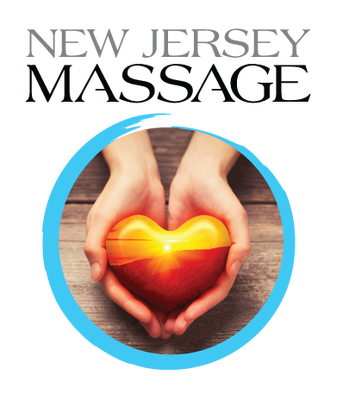|
973-263-2229
|
|
|
New Jersey Massage Continuing Education - Instrument Assisted Soft-Tissue Manipulation
Instrument Assisted Soft-Tissue Manipulation Simplified
with Chris Gellert, PT, MPT, CSCS, C-IASTM
2-day, 9:30am to 5:30pm
14 CE Hours for NJ Board of Massage (LMT's)
13 CE Hours, NJ Board of PT (PT's)
$350 for the two day program
$400 when combined with the IASTM Home Study Program (see video below)
for all dates visit the Listing of Courses by Subject
In conjunction with New Jersey Massage, Pinnacle Training & Consulting Systems (PTCS) has created a dynamic course for massage and physical therapists called “Introduction to Instrument Assisted Soft Tissue Manipulation.” A two-day seminar that reviews the foundation of IASTM, types of tools available, different strokes with application, fascia, trigger points, clinical patterns and much more. A chance to learn myofascial release, IASTM, and try 20+IASTM tools.
HOME STUDY COURSE DESCRIPTION
PTCS has created a dynamic home study course entitled “Instrument Assisted Soft Tissue Manipulation (IASTM).” This is a course designed for physical therapists, physical therapist assistants and massage therapists teaching the foundational material that was not learned in school.
This course was designed to be systematic, evidenced-based and most importantly, have direct application that can be used immediately with your patients. Consisting of 12 chapters, the course covers extensively the following:
• A 150 page comprehensive CEU approved course manual that has over 240 references is divided into twelve distinct and separate chapters. The course is filled with over 100+ illustrations and graphics to enhance the learning experience. Delivery is sent electronically from PTCS to the customer or a physical manual can be shipped at an additional fee.
Chapter 1: Foundation and why behind of IASTM
Chapter 2: Research and effectiveness of IASTM
Chapter 3: Principles and benefits of IASTM
Chapter 4: Physiologic and neurophysiologic responses of IASTM
Chapter 5: Type of tools available
Chapter 6: Type of strokes, application and use
Chapter 7: Indications, precautions and contraindications with IASTM
Chapter 8: Fascia, fascial chain and the fascial slings
Chapter 9: Trigger points and adaptive shortening
Chapter 10: Clinical Patterns of Movement Dysfunctions and using IASTM
Chapter 11: IASTM techniques for upper body including cervical, shoulder, thoracic and elbow regions
Chapter 12: IASTM techniques for lower body including lumbar, hip, knee and ankle regions
LIVE IASTM SEMINAR OUTLINE
Day One
with Chris Gellert, PT, MPT, CSCS, C-IASTM
2-day, 9:30am to 5:30pm
14 CE Hours for NJ Board of Massage (LMT's)
13 CE Hours, NJ Board of PT (PT's)
$350 for the two day program
$400 when combined with the IASTM Home Study Program (see video below)
for all dates visit the Listing of Courses by Subject
In conjunction with New Jersey Massage, Pinnacle Training & Consulting Systems (PTCS) has created a dynamic course for massage and physical therapists called “Introduction to Instrument Assisted Soft Tissue Manipulation.” A two-day seminar that reviews the foundation of IASTM, types of tools available, different strokes with application, fascia, trigger points, clinical patterns and much more. A chance to learn myofascial release, IASTM, and try 20+IASTM tools.
HOME STUDY COURSE DESCRIPTION
PTCS has created a dynamic home study course entitled “Instrument Assisted Soft Tissue Manipulation (IASTM).” This is a course designed for physical therapists, physical therapist assistants and massage therapists teaching the foundational material that was not learned in school.
This course was designed to be systematic, evidenced-based and most importantly, have direct application that can be used immediately with your patients. Consisting of 12 chapters, the course covers extensively the following:
• A 150 page comprehensive CEU approved course manual that has over 240 references is divided into twelve distinct and separate chapters. The course is filled with over 100+ illustrations and graphics to enhance the learning experience. Delivery is sent electronically from PTCS to the customer or a physical manual can be shipped at an additional fee.
- The student will have access to over 20 videos that compliment and review each of the twelve chapters of the IASTM Home Study Course.
- The course is divided into twelve separate chapters. Which are listed below. The reason we choose this order, is that the material synergistically blends and compliments the previous chapter.
Chapter 1: Foundation and why behind of IASTM
Chapter 2: Research and effectiveness of IASTM
Chapter 3: Principles and benefits of IASTM
Chapter 4: Physiologic and neurophysiologic responses of IASTM
Chapter 5: Type of tools available
Chapter 6: Type of strokes, application and use
Chapter 7: Indications, precautions and contraindications with IASTM
Chapter 8: Fascia, fascial chain and the fascial slings
Chapter 9: Trigger points and adaptive shortening
Chapter 10: Clinical Patterns of Movement Dysfunctions and using IASTM
Chapter 11: IASTM techniques for upper body including cervical, shoulder, thoracic and elbow regions
Chapter 12: IASTM techniques for lower body including lumbar, hip, knee and ankle regions
LIVE IASTM SEMINAR OUTLINE
Day One
|
9:30 - 10:00 am
10:00 - 10:30 am 10:30 - 10:45 am 10:45 - 2:15 pm 12:15 - 1:15 pm 1:15 - 2:00 pm 2:00 - 3:30 pm 3:30 - 5:30pm Day Two 9:30am - 10:00 am 10:00 - 11:00 am 11:00 - 11:15 am 11:15 -1 2:30 pm 12:30 - 1:30 pm 1:30-3:15 pm 3:15 - 4:15 pm 4:15 - 5:30 pm |
Foundation of IASTM (L)
Principles/Benefits/Tools Available (L) BREAK Basic treatment strokes lab (Lab) LUNCH Fascia, fascial chain and fascial slings(L) Foundation of myofascial release techniques for Neck/Shoulder and Lumbar Spine (L/lab) Assessment/Demo/IASTM for cervical region(Lab) Trigger points and adaptive shortening (L) Common trigger point referral patterns of common movement dysfunctions (Lab) BREAK Myofascial release techniques for hip (Lab) LUNCH Assessment and IASTM techniques for the hip region (Lab) Myofascial release techniques for lower foot and ankle (Lab) IASTM techniques to the lower leg (Lab) |

